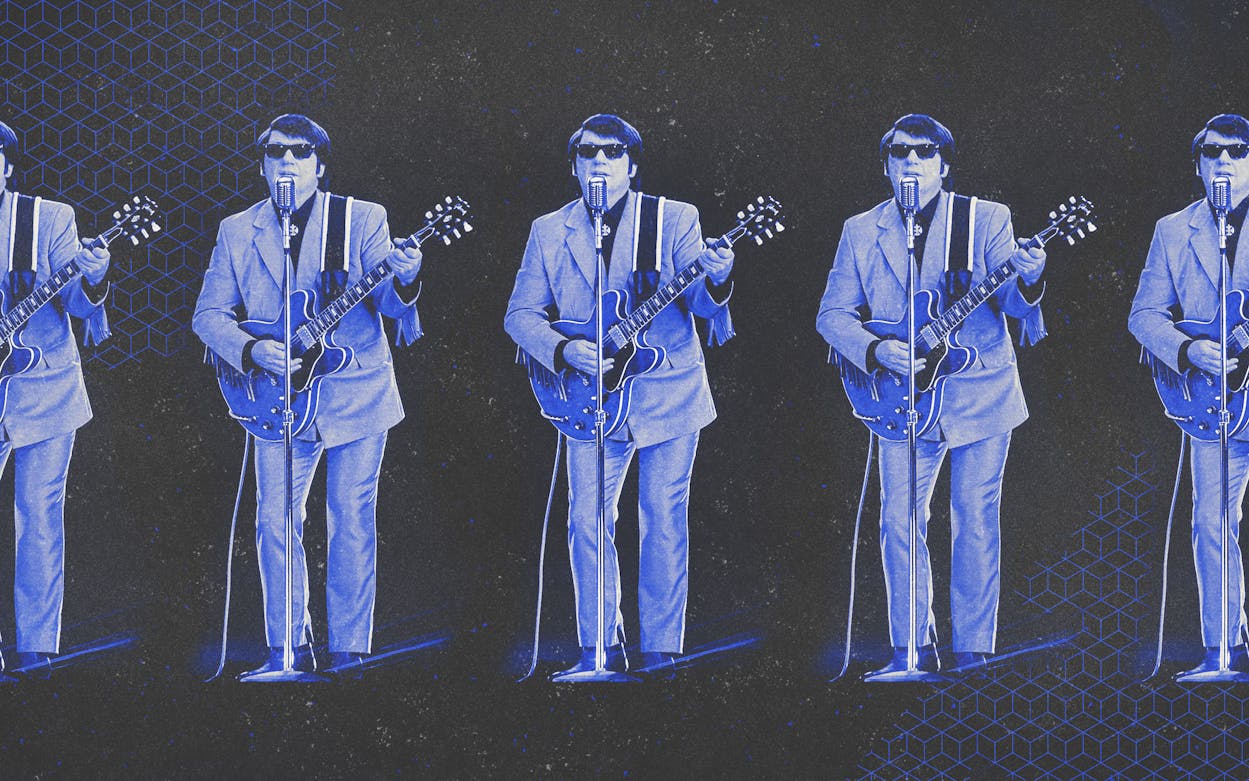Roy Orbison died in 1988, but that won’t stop him from going on tour this fall. The iconic native of Vernon will entertain audiences in a non-corporeal form at theaters, concert halls, and auditoriums across North America in his 28-date tour, concluding with a residency in Branson, Missouri, the kitsch performance capital of the Midwest.
Orbison’s tour, which is fully sanctioned by his estate, doesn’t involve candles or a Ouija board. Like for Tupac and Michael Jackson before him, Orbison’s performance will use hologram technology to create an optical illusion that resembles the singer’s form, synced to archived recordings of his performance. Explaining the appeal to the family, Orbison’s son (and president of Roy Orbison Music), Alex, told Rolling Stone, “My father had a special transcendent vocal ability that made him something of an anomaly in the world of pop and rock, but that’s what endeared him to his fans. For our family it was an amazing emotional experience to see this for the first time and we know audiences worldwide will have the same reaction.”
The performing “holograms” are actually not technically holograms—holograms are three-dimensional, while these just look like they’re 3-D. Until very recently, they were built around very old technology called the “Pepper’s Ghost” illusion technique, which projects light onto glass held at a 45-degree angle, is essentially the same now as it was when invented back in the 1860s. The technology dates back to John Pepper, director of the Royal Polytechnic Institution at the University of Westminster, who adapted the “Dircksian Phantasmagoria” technique, created by English inventor Henry Dircks, for a performance of Charles Dickens’s The Haunted Man in 1862. The technology became a fad in London theaters, and it was seized upon by P.T. Barnum in the U.S.
For most of the 150 years since its discovery, Pepper’s Ghost was primarily used as a novelty. Disney used it in its “Haunted Mansion” rides, and its main application has otherwise been as the primary technology behind the teleprompter. In the mid-aughts, the technology improved enough so that the animated rock band Gorillaz performed “live” at the 2006 Grammys, and a year later, Celine Dion performed a duet with a hologram version of Elvis on American Idol. But the floodgates didn’t really open until 2012, when Dr. Dre and Snoop Dogg surprised fans at Coachella with an unannounced appearance of their late collaborator, Tupac Shakur.
The Tupac hologram looked good, even if watching the slain rapper’s surviving friends banter with it on stage had a ghoulish element. But once the technology proved itself workable for live performances on a large scale—and because of the viral response to the Tupac hologram—the concert industry seized upon it. The Wu-Tang Clan performed with hologram Ol’ Dirty Bastard; NWA performed with hologram Eazy-E; Michael Jackson moonwalked from beyond the grave at the Billboard Music Awards in 2014; metal icon Ronnie James Dio, legendary musical weirdo Frank Zappa, and Greek soprano Maria Callas have all eschewed the limitations of their mortal forms to continue to go on tour and earn performance revenue for their estates even after death. At the Super Bowl in February, halftime performer Justin Timberlake was discouraged from using a Prince hologram he had developed after speaking with the late singer’s collaborator, Sheila E. (When asked about hologram performances in the past, Prince described them as “the most demonic thing imaginable.”)
Orbison, though, isn’t the product of Pepper’s Ghost. Rather, the company behind the production, Houston-based BASE Hologram, uses a laser-based technology to bring its performers to “life.” CEO Marty Tudor says, “Without giving too much away, these tours are created utilizing cutting-edge techniques to be able to bring these projects to the stage,” which includes using a body double and using audio technology that allows them to strip the vocal track away from the original recording so the hologram can perform with a live orchestra. “From there it’s marrying that audio with digital and laser imaging, CGI techniques and spectacular showmanship.”
And while hologram performers can be creepy, Orbison is a unique choice to go on tour in this phantasmal form. The hologram version of the man who sang “Oh Pretty Woman” and “Only the Lonely” performed the same tour in Europe in the spring, and as Alex Orbison said, there is something transcendent in his father’s voice that makes him uniquely suited to a spectral performance. Orbison’s voice is ethereal on record, elevating nonsense like “Ooby Dooby” into a foot-moving chorus and turning songs like his late career, Glenn Danzig-penned hit “Life Fades Away” into otherworldly epics. An illusory Orbison singing these songs to crowds in theaters, accompanied by a live orchestra, feels somehow appropriate. At the very least, the inherent creepiness of the performance might lend it an authenticity that should make for interesting spectacle—and if you’re going to see a hologram version of a dead singer perform, spectacle is probably what you’re ultimately signing up for, anyway.
This article has been updated to reflect how Orbison’s performance will work based on BASE Hologram’s technology.
- More About:
- Music








